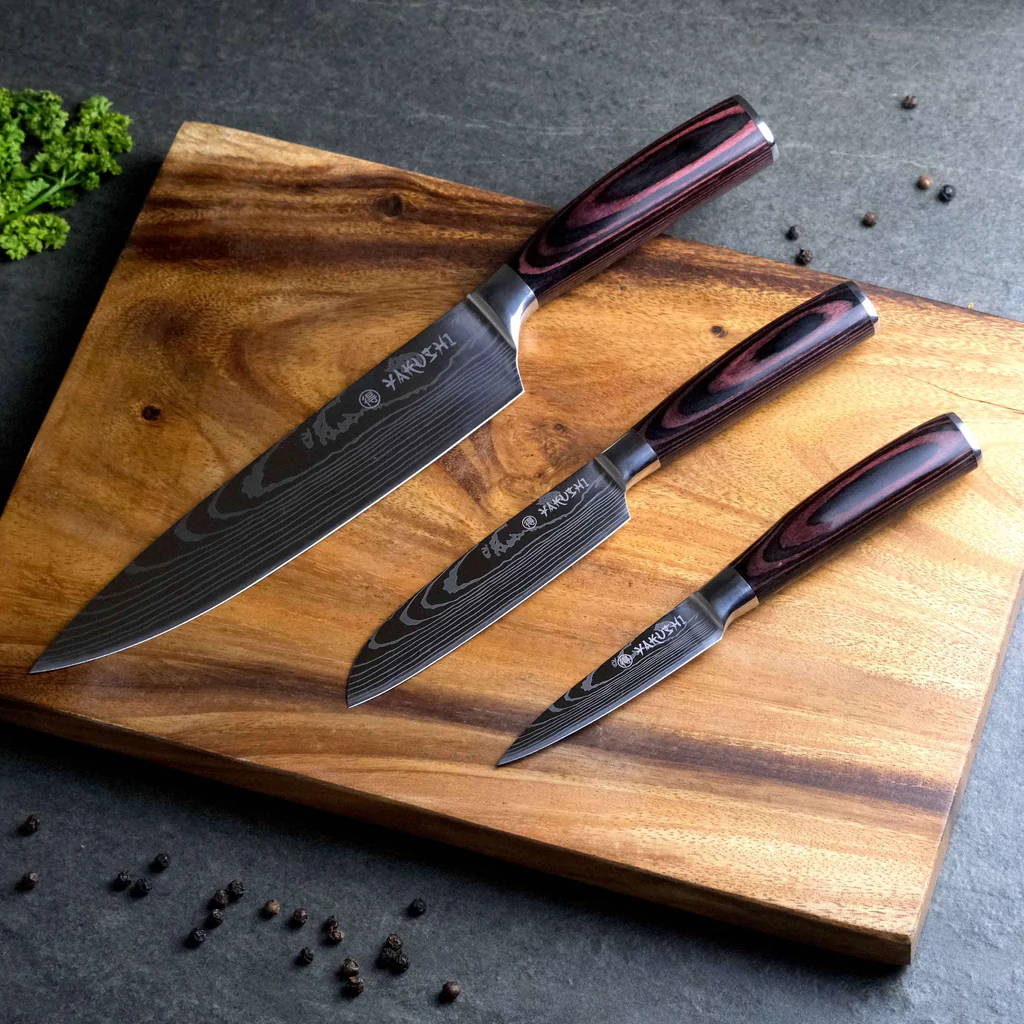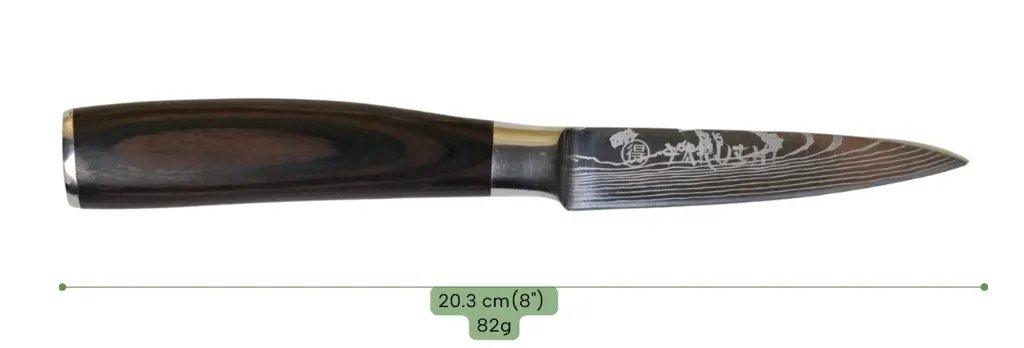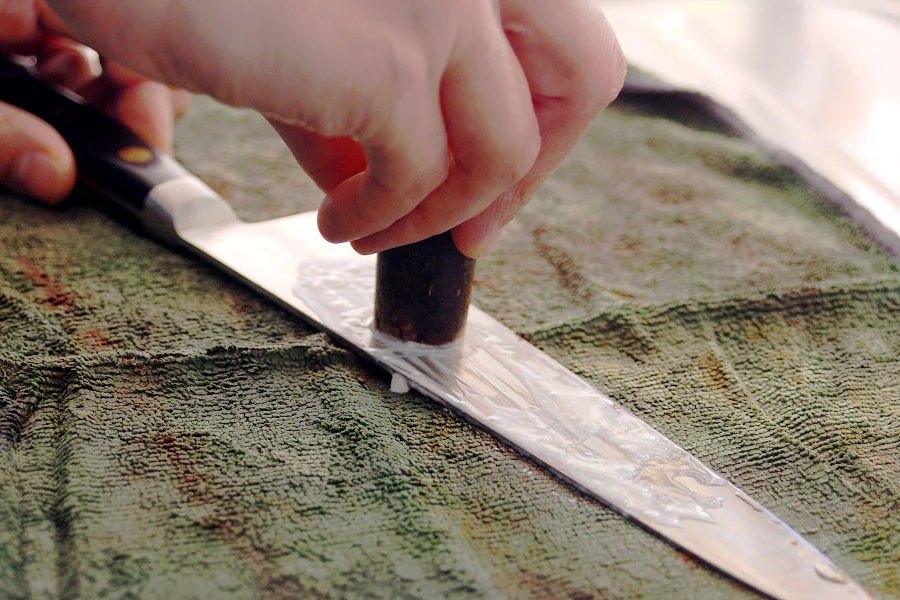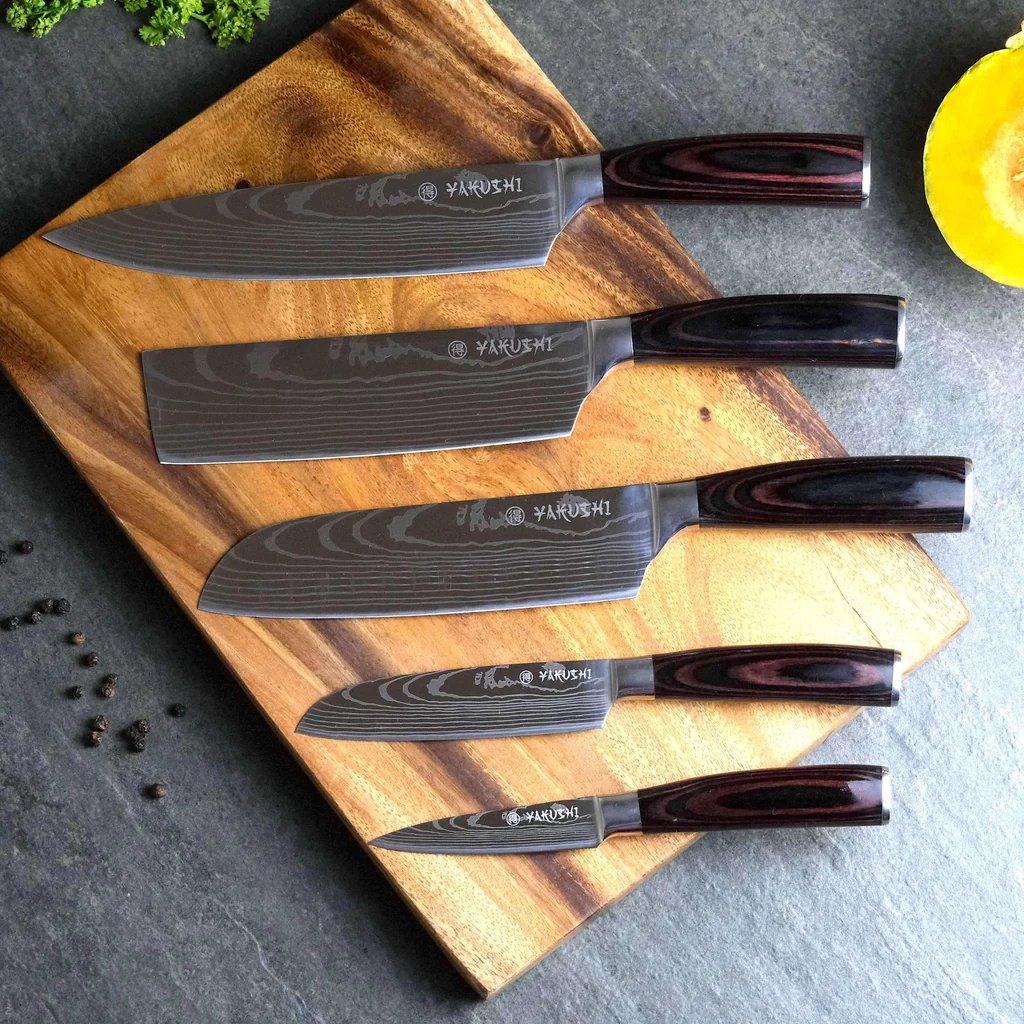Why Use Paring Knives and
How To Use Them Correctly

A Brief Anatomy of Paring Knife
- Blade Length: Typically 3 to 4 inches, ideal for precision tasks.
- Tip: Fine, pointed end. Perfect for detailed work like seeding peppers or hulling strawberries.
- Edge: Razor-sharp and straight, allowing for smooth cuts without tearing.
- Spine: The unsharpened top part of the blade gives the peeling knife its stability.
- Heel: The blade's rear part can be used for cutting tougher items.
- Handle: Ergonomically designed for comfort, ensuring a firm grip.
- Bolster: It is the thick junction between the handle and blade, providing balance and safety.
- Tang: The part of the blade that extends into the handle, offering strength and durability.
Advantages of Using Paring Knives
Precision Cuts
Versatility in Hand
Unlike its heftier counterparts, the paring knife is specifically designed to be held in the hand rather than rested on a board. This grants chefs the dexterity to peel, shape, or score fruits and vegetables seamlessly, transitioning between tasks like a culinary ballet.
Ideal for Delicate Tasks
The delicate nature of certain ingredients like berries or soft fruits demands a gentle touch. The paring knife's slender blade enables chefs to hull strawberries or segment citrus fruits without bruising or wasting the flesh.
Safety and Control
Its compact size not only assures precision but also safety. With a comfortable grip and manageable blade length, risks of accidental nicks or cuts are substantially minimized, especially during intricate tasks.
Space-Efficiency
In professional kitchens where space is gold, the paring knife’s compact design means it can be stowed away easily, always within arm's reach, but never in the way.
How to Use Paring Knives Correctly

Proper Grip
Handheld Tasks
Board Work
For mincing herbs or chopping small items, use it like a chef’s knife, but remember it's designed for smaller, finer tasks.
Avoid Prying
The thin blade can be delicate. Refrain from using it to pry things apart, as this risks breaking the tip.
Regular Sharpening
Like all knives, a sharp kitchen paring knife is safer and more effective. Hone regularly and sharpen as needed.
Care and Maintenance of Paring Knives
Gentle Cleaning
Given its smaller size, always hand-wash your paring knife. Avoid abrasive scouring pads which can mar its fine edge. Instead, use a soft cloth or sponge with mild detergent.
Immediate Drying Thin Blade
Due to its often-thinner blade, it’s more susceptible to corrosion. Dry immediately after washing using a soft towel, paying special attention to the blade.
Avoid Chipping With Safe Storage
Store separately from other utensils. A blade guard, knife block slot, or a magnetic strip ensures its edge remains unchipped.
Tailored Sharpening
Use a honing rod designed for smaller knives or a sharpening stone. Its petite blade requires a gentler and more precise sharpening approach.
Avoid Dishwashers
The vigorous environment of dishwashers can be too harsh, risking blade warping or handle damage.
Choosing the Right Paring Knife
Material Considerations
High-carbon stainless steel is the pinnacle choice for paring knives and for a good reason. While stainless steel alone is renowned for its corrosion resistance, it can sometimes lack the sharpness retention desired by chefs. Carbon steel, on the other hand, is celebrated for maintaining a razor-sharp edge but can be prone to rust. High-carbon stainless steel efficiently bridges these qualities, offering an optimal blend of rust resistance and long-lasting sharpness, making it indispensable in high-end culinary tools.
Blade Length
The length of a paring knife's blade directly influences its functionality. Typically ranging from 3 to 4 inches, the choice largely depends on the user's comfort. However, many chefs and culinary enthusiasts find the 3.5-inch blade to be the sweet spot. It ensures sufficient length for diverse tasks while maintaining agility that doesn’t overextend, thereby optimizing control.
Tang Design
The tang's significance might be overlooked, but it plays a pivotal role in the knife's overall balance and strength. A full tang, spanning the entirety of the handle, offers not just superior weight distribution but also augments the knife's lifespan, handling rigorous tasks with aplomb.
Handle Design and Ergonomics
Beyond aesthetics, the handle’s material and design determine the user's comfort and safety. Pakkawood, a dense engineered wood, and certain textured synthetic materials ensure a solid grip, even in wet conditions. A handle that contours the user’s hand will mitigate strain, especially during extended culinary endeavors.
Blade Variations
While the straight-edged blade is a jack-of-all-trades, other shapes cater to specific needs. The bird's beak, with its pronounced curve, is perfect for peeling, while the sheep’s foot design, with a straight edge and rounded tip, excels in precision tasks.
Artisanship and Craftsmanship
A best paring knife is a testament to craftsmanship. An impeccable finish, the marriage of blade and handle without gaps, and a consistently sharp edge are hallmarks of a knife forged with care and expertise. Investing in such detail ensures not just a tool but a culinary companion.




Leave a comment
This site is protected by hCaptcha and the hCaptcha Privacy Policy and Terms of Service apply.